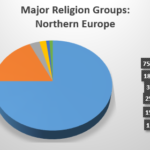How the Justinian Code Shaped Religious Life and Law in the Byzantine Empire

Introduction
The reign of Emperor Justinian I (527-565 CE) marked a turning point in the history of law, religion, and governance. His most lasting legal achievement, the Justinian Code (Corpus Juris Civilis), did not merely reform civil law-it fundamentally redefined the relationship between the state and religion in the Byzantine Empire. The Code’s religious provisions influenced Christian doctrine, institutional authority, and the treatment of other faiths, with repercussions for centuries.
Religious Unity as Legal Mandate
Justinian viewed religious unity as critical for imperial stability. The Code’s preamble and its first book make clear that adherence to the orthodox Christian faith-defined in accordance with the Council of Nicaea and subsequent councils-was not just preferred but required for full participation in public life. The Code decreed that all subjects should “live under the same religion that the Divine Peter, the Apostle, gave to the Romans,” thereby elevating Catholic Christianity as the sole legitimate faith of the empire. Those deemed heretics were to be “considered as demented and insane,” subject to legal penalties and social infamy [3] .

Source: grosvenor.com.au
State Power Over Doctrine and Church
Although Justinian’s era is sometimes described as one of
caesaropapism
-the subordination of church to state-the reality was more complex. Justinian saw himself as Christ’s representative on earth, responsible for protecting and defining the faith. He exercised power to settle doctrinal disputes, such as the controversies between Miaphysite and Chalcedonian Christians. He even imprisoned Pope Vigilius to pressure him into doctrinal compromise and issued edicts on arcane theological questions, including the nature of Christ’s body. These interventions sometimes sparked outrage among clerics but set a precedent for imperial involvement in church affairs
[5]
.
At the same time, Justinian formally affirmed papal authority in religious matters. In 533, he sought papal confirmation for an edict suppressing heresies. Pope John II’s reply, affirming the law and the primacy of the Roman Church, was incorporated into the Justinian Code, making it legally binding. This remarkable exchange recognized religious authority as emanating from both emperor and pope, although practical control remained with the emperor due to his political power [4] .
Regulation and Restriction of Minority Religions
The Code addressed not only Christian orthodoxy but also the status of minority faiths, especially Judaism and paganism. Justinian’s laws allowed Jews to conduct religious services and read scriptures in approved languages, but imposed strict limitations: the use of certain texts was forbidden, the building of new synagogues was discouraged through taxation, and Jews were barred from intermarrying with Christians and from holding certain offices. Apostasy from Christianity to Judaism was harshly punished, and the enslavement of Christians by Jews or pagans was forbidden (but not the reverse). While some earlier imperial protections for Jews were preserved, these policies made clear that non-Christian religions were tolerated only within narrow, state-defined boundaries [1] .
Paganism, once the religion of the Roman Empire, was further marginalized. Justinian closed the last pagan philosophical school in Athens and sent missionaries to convert remaining pagans, aiming for a homogenous Christian society [2] .
Practical Impacts on Church Institutions and Daily Life
Justinian’s legal reforms institutionalized the power of the Christian church, especially its bishops and clergy. Church property and privileges were protected by law. The construction of monumental churches, like the Hagia Sophia, was both a religious and political statement, cementing the church’s central role in public life. Ecclesiastical courts, empowered by the Code, handled certain legal disputes, further blurring the line between religious and civil authority [5] .
For individuals, religious affiliation now had legal consequences. Non-Christians faced restricted civil rights, limited career opportunities, and, in some cases, risked confiscation of property or exile. The Code’s integration of faith and law meant that conversion, apostasy, and even heresy were matters for both church and state intervention.
Legacy and Broader Influence
The Justinian Code became a model for later legal systems, influencing both Eastern Orthodox and Western Catholic conceptions of church-state relations. Its provisions shaped the development of canon law and medieval legal codes across Europe. The combination of legal rigor and religious authority embedded by Justinian established the template for centuries of Christian governance and continues to inform debates about the intersection of faith and public life.

Source: sigarch.org
How to Access and Study Justinian’s Religious Laws Today
The full Justinian Code, including its religious provisions, is available in various academic translations and online repositories. To study these laws in detail, consider the following steps:
- Visit major university or national libraries, which typically hold critical editions and translations of the Justinian Code. Search for “Corpus Juris Civilis” or “Code of Justinian” in their catalogs.
- Online, you can access translations and scholarly commentary through reputable university-hosted sites or legal history projects. For example, the University of Grenoble provides a full English translation of Book 1, which covers religious provisions [3] .
- For broader context, consult academic histories of the Byzantine Empire and legal commentaries on the impact of the Code on religious minorities. Many university-affiliated digital libraries and scholarly databases offer access to peer-reviewed articles and historical treatises.
- If you are interested in church history or the role of law in shaping Christianity, searching for “Justinian Code religion impact” in academic databases or using Google Scholar will yield authoritative analyses. Consider contacting history departments at major universities for recommendations on primary sources and recent research.
Challenges and Alternative Perspectives
While the Justinian Code strengthened and unified Christianity within the empire, it also set a precedent for religious intolerance and state control over faith. Contemporary scholars debate whether Justinian’s policies constituted progress or repression. Some view his efforts as essential for stability and the flourishing of Byzantine civilization; others criticize the marginalization and persecution of religious minorities. Understanding these nuances is crucial for anyone exploring the legal and religious legacy of Justinian I.
Summary
The Justinian Code had a lasting and complex impact on religion: it institutionalized Christian orthodoxy, regulated minority faiths, formalized the authority of church leaders, and established principles of church-state unity that echoed for centuries. Its legacy is visible in the legal and religious frameworks of both Eastern and Western societies. To explore these effects in depth, leverage university libraries, academic websites, and reputable historical commentaries for the most accurate and nuanced information available today.
References
- [1] Language Log (2009). Justinian’s linguistic legislation and its impact on Jews and minority religions.
- [2] Christian History Institute (2025). Justinian’s role in church unity and Christianization policies.
- [3] Université Grenoble Alpes. The Code of Justinian: Religious laws and enforcement (Book 1, Scott translation).
- [4] Eternal Christendom (2024). Papal authority and its affirmation in the Justinian Code.
- [5] Encyclopaedia Britannica (2025). Justinian’s ecclesiastical policy and legal reforms.






